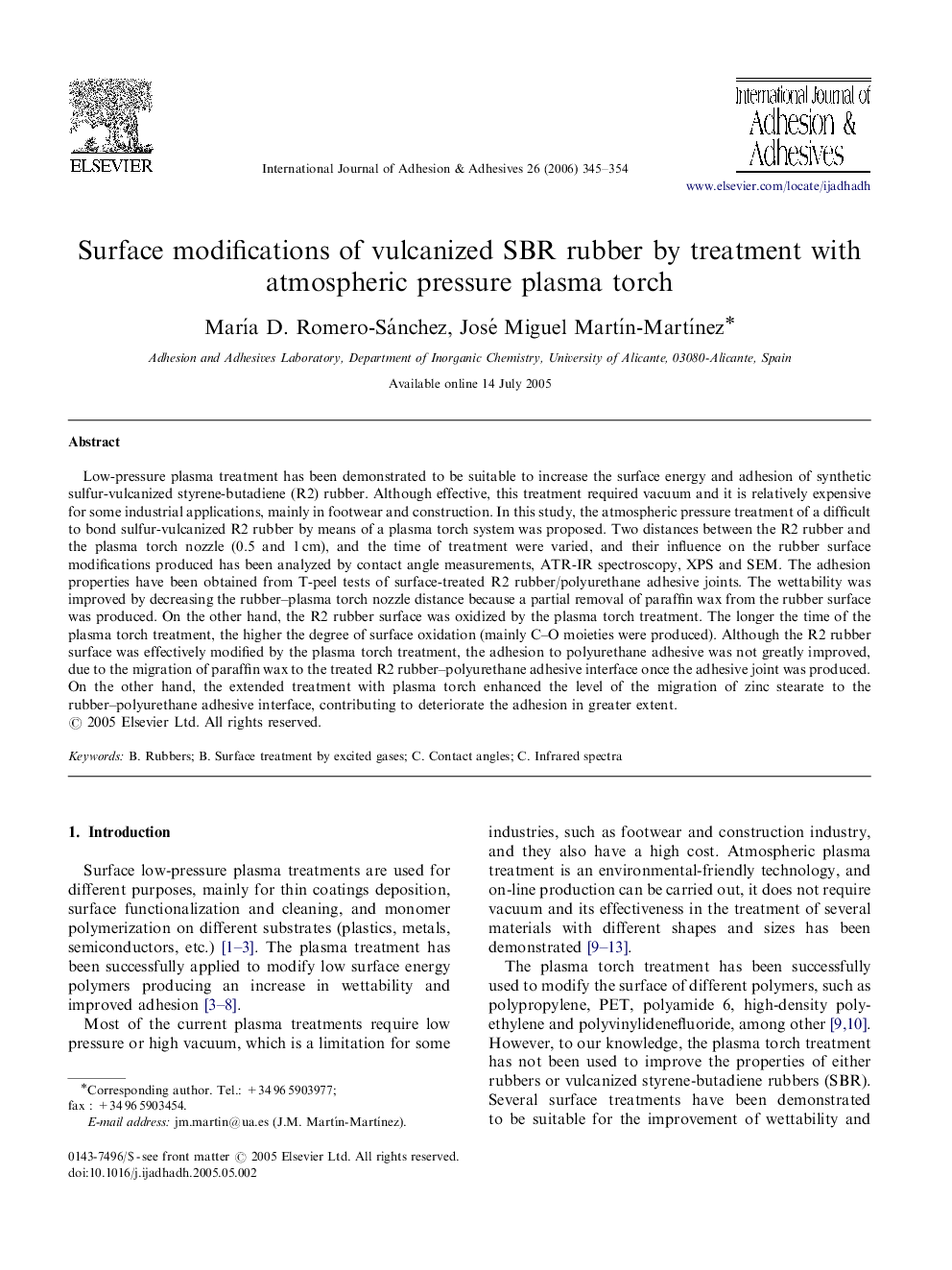| Article ID | Journal | Published Year | Pages | File Type |
|---|---|---|---|---|
| 777569 | International Journal of Adhesion and Adhesives | 2006 | 10 Pages |
Low-pressure plasma treatment has been demonstrated to be suitable to increase the surface energy and adhesion of synthetic sulfur-vulcanized styrene-butadiene (R2) rubber. Although effective, this treatment required vacuum and it is relatively expensive for some industrial applications, mainly in footwear and construction. In this study, the atmospheric pressure treatment of a difficult to bond sulfur-vulcanized R2 rubber by means of a plasma torch system was proposed. Two distances between the R2 rubber and the plasma torch nozzle (0.5 and 1 cm), and the time of treatment were varied, and their influence on the rubber surface modifications produced has been analyzed by contact angle measurements, ATR-IR spectroscopy, XPS and SEM. The adhesion properties have been obtained from T-peel tests of surface-treated R2 rubber/polyurethane adhesive joints. The wettability was improved by decreasing the rubber–plasma torch nozzle distance because a partial removal of paraffin wax from the rubber surface was produced. On the other hand, the R2 rubber surface was oxidized by the plasma torch treatment. The longer the time of the plasma torch treatment, the higher the degree of surface oxidation (mainly C–O moieties were produced). Although the R2 rubber surface was effectively modified by the plasma torch treatment, the adhesion to polyurethane adhesive was not greatly improved, due to the migration of paraffin wax to the treated R2 rubber–polyurethane adhesive interface once the adhesive joint was produced. On the other hand, the extended treatment with plasma torch enhanced the level of the migration of zinc stearate to the rubber–polyurethane adhesive interface, contributing to deteriorate the adhesion in greater extent.
